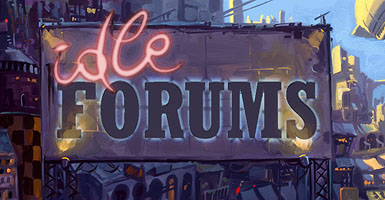Hi. As someone who loves doing chronologies I was intrigued by the lengthy timelines given for the Foundation and Dune series. They are monumental works; so much so that some geography on the moon Titan of the Saturnian system is named after things that appear in the novels. This is an honor bestowed upon few. Here are some examples.
Phobos
Jonathan Swift's Gulliver's Travels
Io
Mensae, Montes, Plana, Regiones and Tholi
Dante's Inferno
Mimas
Malory's Le Morte d'Arthur
Enceladus
Burton's Arabian Nights
Tethys
Homer's Odyssey
Dione
Virgil's Aeneid
Titan
Colles and Montes
J.R.R. Tolkien's Middle-earth
Freta
Isaac Asimov's Foundation series
Planitiae and labyrinthi
Frank Herbert's Dune series
Iapetus
Sayers' translation of Chanson de Roland
Phoebe
Apollonius Rhodius' or Gaius Valerius Flaccus' Argonautica
Miranda
Shakespeare's plays
Titania
Shakespeare's plays
Oberon
Shakespeare's plays
Charon
Fictional space and other exploration
Note that only three modern novels are on the list, all for describing features on Titan.
I had previously figured out ways to date the events for J.R.R. Tolkien's Middle-earth by using archaeoastronomy and thought that the worlds of Frank Herbert and Isaac Asimov might benefit from insights that such research could provide.
One thing I noticed was that the timeline of the Foundation universe seemed to correlate very well with the Yugas as described by some authors, such as Swami Sri Yukteswar and Paramhansa Yogananda. They believed we are now in an ascending Dvapara Yuga which may have begun on September 23, 1699 AD, coinciding with a hybrid solar eclipse of that year. If this is the case then it should be easy to date the past and future Yugas. In their scheme a Maha Yuga lasts for 12,000 years and is divided into 4 parts of increasing or decreasing duration, all multiples of 1,200 years. Our current cycle began with a Kali Yuga, or Iron Age, in September of 499 AD. This was followed by the previously mentioned Dvapara Yuga, or Bronze Age, 1,200 years later. 2,400 years after that comes a Treta Yuga, or Silver Age, and 3,600 years later a Satya Yuga, or Golden Age, which lasts for 4,800 years. This completes the 12,000 year cycle of the ascending Maha Yuga by 12,499 AD.
In the Foundation series the Galactic Era begins in 12,500 AD. What are the odds? And both last for about the same amount of time. The descending Maha Yuga, which is the same as the preceding ascending one but in reverse order, for exactly 12,000 years and the Galactic Era for a little over 12,060. Hari Seldon and Cleon I were born only 12 years before the dozen millenia had passed, 99.9% of the way through it. Both rhe Roman and Galactic Empires collapsed at the end of their respective cycles.
Interestingly the Yugas and many other chronological periods may be tied to to planetary alignments. The 60 year sosses of the Sumerians probably has a relationship to the great conjunctions of Jupiter and Saturn. Around once every 20 years they come together at about a third a way across the zodiac from their previous conjunction. Thus they complete the circle in about 60 years. A larger unit of time is the sars which lasts for 3,600 years, or 60 times 60. Our hours and minutes may be derived from this. What is fascinating is that the conjunctions of Uranus and Neptune have a similar pattern to that of the ones of Jupiter and Saturn. Seven of their pairings take an average of 1,200 years and traverse a third of the tropical zodiac. This is quite precise; 1,200.12 years to be exact. Could this be the basis for the Yugas? And 21 conjunctions, or three times seven, complete the circle for 3,600 years total.
About once every two millenia the conjunctions of Uranus and Neptune are particularly close.
The last one of this kind was during a triple conjunction in 452-3 AD. Right during the middle one Attila the Hun died, changing world history in ways we can only guess at.
The next alignment of these two planets came in 623 AD. Wasn't there something involving a Jihad in the desert about that time? Two days after another one of these grandest of conjunctions occurred in 1821 Napoleon died.
Looking into the far future there will be one of those extremely rare events like what happened in 452. Uranus and Neptune will come closer to each other than they have for 4,115 years in 12969 AD. This is exactly 11,000 years after men first went to the Moon.
"Mankind's movement through deep space placed a unique stamp on religion during the one hundred and ten centuries that preceded the Butlerian Jihad.” Dune, Appendix II
